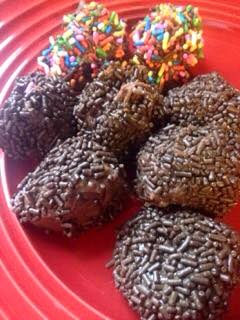About Our Choice
Only 90 miles from the coast of Florida, Cuba is a still a source of mystery to many Americans who grew up during the cold war. Our relationship with Cuba is complex. Culturally, the music, the food, and the Caribbean history and locale call to our imaginations and influence our own heritage thanks to many Cuban ex-pats. Cuban cigars have taken on their own mythology. Yet for the last few generations, an average American hasn't had the ability to see Cuba for themselves. Instead, Cuba is filtered for us through movies, art, and the media. When researching for this post, I ran across this page that includes a compelling description of Cuba that captures what intrigues us so about Cuba.
The Selection Process
For C, we had a wide variety of countries to choose from (24 in fact), ranging from Cambodia to the Czech Republic. We knew that there were some countries that we were going to eliminate. For example, Chile was out of the running since we had just explored Brazil. We also eliminated some obvious contenders like China because I (Tim) have an allergy to ginger. In the end, after much debate, we landed on two neighbors to the U.S. as our main contenders: Canada and Cuba. While both had appealing elements, we went with Cuba. Perhaps it was because of the cold winter we had been suffering through. I think we all were craving a reminder of sunnier climates. The awesome thing about Cuba was that we already had some experience cooking Cuban food (Cuban sandwiches and Soffrito Rice are favorites in our house). We did, though, set out to make all new recipes and to find some new favorites to return to throughout the year.
The Recipes
We weren't disappointed, the meal we put together was delicious and colorful, and so worth the time and effort. We made the following:
The Process
We decided this time to extend the fun to members of our family (Tim's sister and her family) and to enjoy the food in a festive atmosphere. We invited them over at 6, and we began the cooking at noon.
We started by locating our music first. The Cuban Music Pandora station is outstanding and a lot of fun. We did our share of dancing as we cooked which set a great mood for the rest of the day.
First, we made the marinade for the chicken. The recipe called for red chilies. While we couldn't find red chili peppers at the local groceries, we found a tube of red chili paste that worked great. The color and flavor were amazing! We covered the chicken and let it start soaking up the goodness. By the way, we doubled this recipe to account for our added guests.
Next, we started making the Sofrito for the rice. This process was pretty easy, but it needed to be done ahead of time since it was an ingredient for another dish. The recipe above creates a large amount of Sofrito, so if you are just making this for the one dish, we'd recommend halving the recipe.
Next, we made the dough for the cookies. We found that the dough was drier than what we were used to, and the cookies turned out drier and more crumbly as well, almost like a biscuit. The cookie was less flavorful than we had hoped as well, but we had a great moment of inspiration. We whipped up an icing made of powdered sugar, grated lime peel and lime juice. The icing helped bring out the citrus flavor in the cookies.
Once the cookies were done, we started the frying the plantains because our guests would be arriving soon. The recipe said that it wasn't uncommon to sprinkle fried plantains with salt or sugar. That got us wondering if doing both would be good. We like kettle corn, so we thought the same concept of sweet and salty might apply here. It did. They were delicious and didn't last long.
As the adults settled in to the plantains and mojitos, we started putting together the rest of the meal. At roughly the same time, we started the rice dish and the chicken dish. As with the chicken dish, we doubled the rice dish since we had guests. The Mango-Avacado Salsa was the last to be added, and the combination of the colors, flavors and textures was the perfect addition to an already beautiful dish!
What We Learned
We definitely struck out in new directions this time, and everything turned out well. We learned that inviting others to enjoy the fun is definitely a big bonus to this project. We also learned that adding our own touches to the dishes makes the creative process more fun and the food even better! We learned that Cuban cuisine is very flavorful and colorful. And finally, we found an amazing Pandora station that we will definitely be returning to.
Overall Thoughts
Tim- I couldn't get enough of the chicken. The marinade and salsa made the dish so inviting. That's good-for-your-soul food as far as I'm concerned. I like that we started with something somewhat familiar and expanded on it. I also like that we took risks with the recipes. This was easily my favorite meal so far (and I thought Brazil would be hard to top).
Annie- I really enjoyed this meal, however, I'm not sure if it beat Brazil. The fried plantains were my favorite part, and also probably the easiest. The chicken was amazing and so flavorful. Beans are not my favorite food in the world, but I definitely liked the beans with rice. Overall a great meal and not too difficult.































